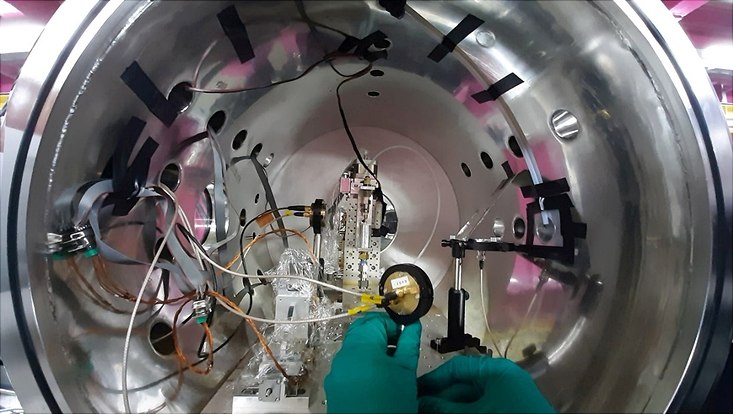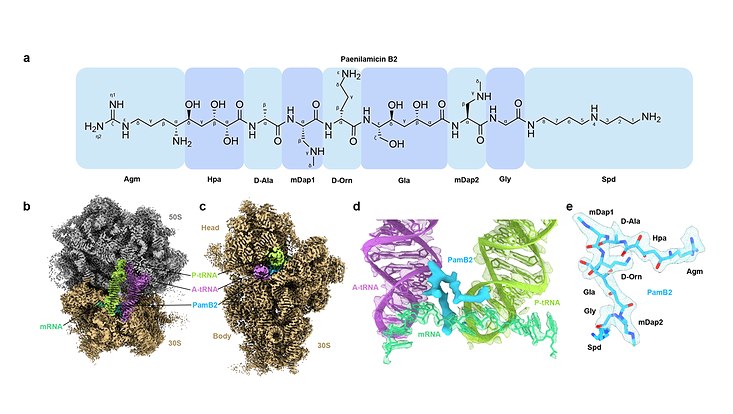and Natural Sciences
Early universeGigantic collisions of galaxy clusters discovered
2 November 2020, by Heiko Fuchs

Photo: PanSTARRS/NASA/Chandra/LOFAR
An international team of researchers with the participation of the Hamburg Observatory of the Universität Hamburg has mapped nine gigantic collisions of galaxy clusters. It is the first time that collisions of such distant clusters have been studied. The researchers publish their findings in the journal “Nature Astronomy”.
Galaxy clusters are the largest structures in the Universe. They can consist of thousands of galaxies, each with billions of stars. When such clusters merge, the electrons between them are accelerated to almost the speed of light. The accelerated particles emit radio waves when they come into contact with magnetic fields in the clusters.
Until now, telescopes were not powerful enough to receive radio waves from distant colliding clusters. But thanks to network of linked antennas of the radio telescope Low Frequency Array (LOFAR) and an 'exposure time' of eight hours per cluster, the researchers were able to collect detailed data from distant clusters for the first time and observe cluster collisions that took place seven billion years ago.
The data shows, among other things, that the radio emission from distant colliding clusters is brighter than previously expected. According to prevailing theories, cluster radio emission originates from electrons that are accelerated by the turbulent motions. It seems that the turbulence and vortices caused by the collisions are strong enough to accelerate particles also in an early Universe.
Furthermore, the magnetic fields in the distant clusters turned out to be about as strong as in previously investigated nearby clusters. According to co-author Prof. Dr. Marcus Brüggen from the Department of Physics of Universität Hamburg this is intriguing: "This work shows for the first time that space is filled with magnetic fields already in a young universe and we do not really know what causes them. In Hamburg we helped design the project and led the theoretical interpretation of the observations."
Original publication
Fast magnetic field amplification in distant galaxy clusters,
G. Di Gennaro, R. J. van Weeren, G. Brunetti, R. Cassano, M. Brüggen, M. Hoeft, T. W. Shimwell,
H. J. A. Röttgering, A. Bonafede, A. Botteon, V. Cuciti, D. Dallacasa, F. de Gasperin, P. Domínguez-Fernández, T. A. Enßlin, F. Gastaldello, S. Mandal, M. Rossetti, A. Simionescu,
Nature Astronomy (2020).
Further information about LOFAR
The Low Frequency Array is an array of many European radio telescopes whose signals are combined into a single signal. With six stations, Germany is the largest international partner in LOFAR besides the Netherlands. The radio telescope stations are operated by the Ruhr-Universität Bochum, the University of Hamburg, the University of Bielefeld, the Max-Planck Institute for Radio Astronomy in Bonn, the Max-Planck Institute for Astrophysics in Garching, the Thüringer Landessternwarte and the Astrophysical Institute Potsdam. In Germany, LOFAR is supported by the Max Planck Society, the German Federal Ministry of Education and Research, the respective federal states and the European Union.


